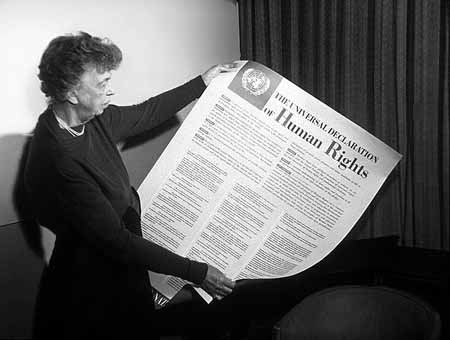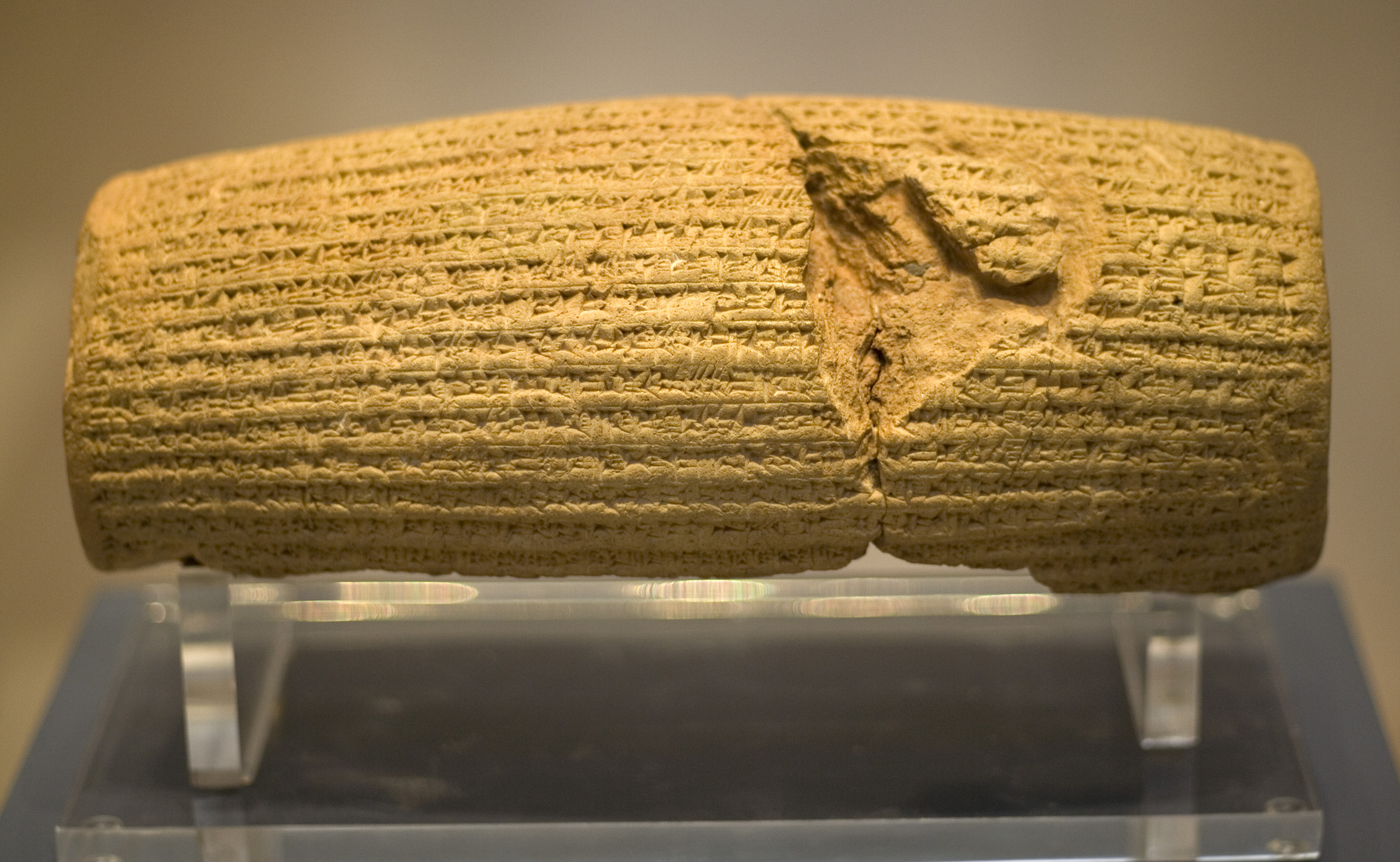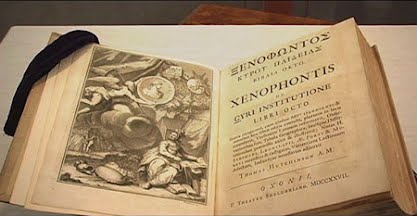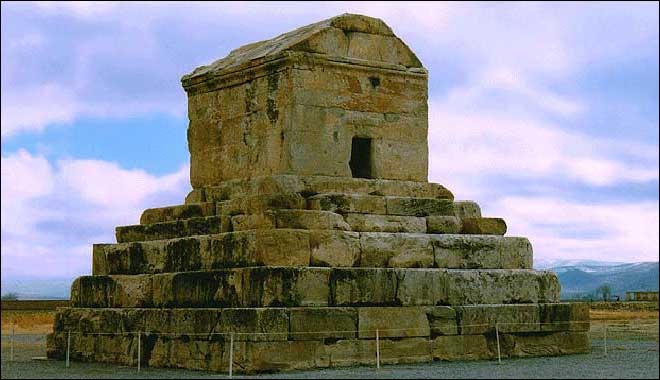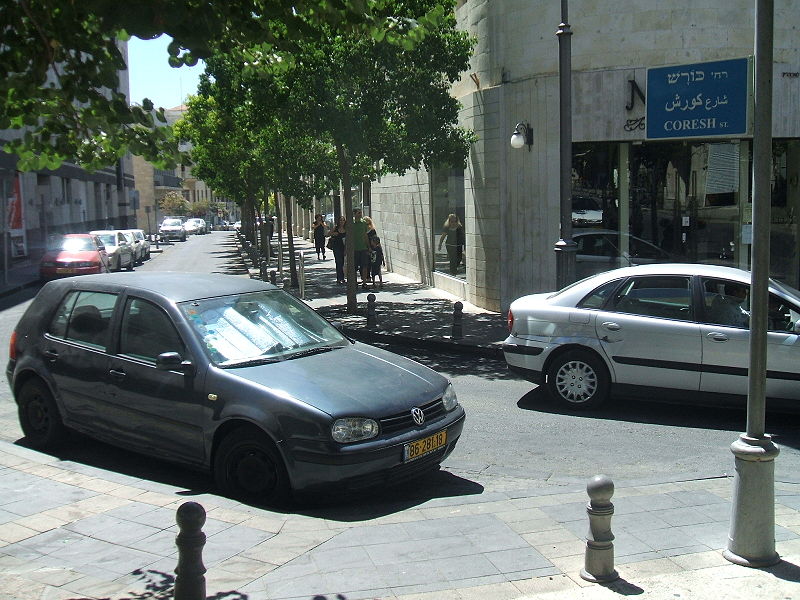The article below by Angelina Perri Birney and Lawrence Birney had been originally posted Kavehfarrokh.com on April 28, 2013, and is being re-posted on January 31, 2017 in lieu of the contemporary state of tumultuous politics at the international level. This posting is a reminder of the 2500 year-old legacy of Cyrus the Great and his policies of benevolent governance. Cyrus founded the Achaemenid Empire which was essentially a multi-lingual and multi-cultural empire. Neil MacGregor, Director of the British Museum:
“Cyrus set up a model of how you run a great multinational, multifaith, multicultural society . . . It left a dream of the Middle East as a unit, and a unit where people of different faiths could live together.”
Cyrus the Great built bridges between peoples and languages and welcomed the diversity of cultures and religions. The lessons of his governance ring as true today as they did 2500 years ago.
=======================================================
IN THE SIXTH CENTURY BC, CYRUS THE GREAT OF PERSIA conquered the Middle East and a large part of Asia. Upon his entry into Babylon, he freed the many captive peoples found there. His magnanimous gesture liberated the Jewish nation and entitled her people to return to Jerusalem with their Temple treasures and begin rebuilding Solomon’s Temple destroyed by Nebuchadnezzar. The Prophet Isaiah referred to Cyrus as “anointed by the Lord.”
The Cyrus Cylinder housed at the British Museum (Picture Source: Angelina Perri Birney).
Cyrus’ legacy as a humanitarian monarch continues to this day. Xenophon, a student of Socrates, wrote The Cyropaedia, a biography of Cyrus which extolled his virtues. Alexander the Great and Julius Caesar carried copies with them. America was directly founded under the benevolent monarch model offered by Cyrus’ example. Thomas Jefferson read the Cyropaedia frequently.
Thomas Jefferson’s copy of the Cyropaedia (Picture Source: Angelina Perri Birney). Like many of the founding fathers and those who wrote the US Constitution, President Jefferson regularly consulted the Cyropedia – an encyclopedia written by the ancient Greeks about Cyrus the Great. The two personal copies of Thomas Jefferson’s Cyropaedia are in the US Library of Congress in Washington DC. Thomas Jefferson’s initials “TJ” are seen clearly engraved at the bottom of each page.
In 1879 a clay record of Cyrus’ decree was unearthed in the ruins of the ancient city of Babylon in Iraq. Known today as the Cyrus Cylinder this priceless account has been referred to as “the first Bill of Rights.” Our very concept of religious tolerance and personal freedom dates to the mind of the Great Persian King. To liberate slaves of a conquered nation and restore their birthright was an extraordinary concept.
Cyrus’ empire, which we now call the Middle East, was a far-reaching ménage of different cultures and faiths. The Cyrus Cylinder decreed a paradigm for coexistence — a blueprint which established an enlightened order.
Disregard and contempt for Human Rights have resulted in barbarous acts which have outraged the conscience of mankind, and the advent of a world in which human beings shall enjoy freedom of speech and belief and freedom from fear and want has been proclaimed as the highest aspiration of the common people… All human beings are born free and equal in dignity and rights. (UDHR-Picture Source: Angelina Perri Birney).
Now, in a historic tour sponsored by IHF America, the original Cyrus Cylinder is on loan to the United States from the British Museum. Beginning at the Smithsonian in Washington, DC, the Cylinder will be on display in Houston, New York, and San Francisco, concluding its visit in Los Angeles in early December 2013. This historic effort is the culmination of almost twenty years of work by the Iran Heritage Foundation.
In addition to the influence of the Cyropaedia on the US founding fathers, its core principles resonate with those of the United Nations. The high-minded concepts fathered by Cyrus in Persia thousands of years ago have found expression in the Universal Declaration of Human Rights. Brought to life by John Peters Humphrey and the UN Commission on Human Rights chaired by Eleanor Roosevelt, the Declaration was adopted by the United Nations on December 10, 1948.
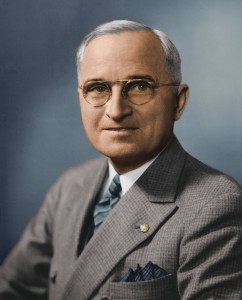 Harry S. Truman (1884-1972) who was President of the United States in 1945-1953. Not only did he acknowledge the legacy of Cyrus the Great in liberating the Jews from their Babylonian captivity, he also stood up against Soviet dictator Joseph Stalin, who tried to absorb Iran’s Azarbaijan province into the Soviet Union. For more Click here…
Harry S. Truman (1884-1972) who was President of the United States in 1945-1953. Not only did he acknowledge the legacy of Cyrus the Great in liberating the Jews from their Babylonian captivity, he also stood up against Soviet dictator Joseph Stalin, who tried to absorb Iran’s Azarbaijan province into the Soviet Union. For more Click here…
In the aftermath of WWII, the United Nations created a Partition Plan for Palestine which called for an International Trusteeship for the city of Jerusalem. This plan was never given the chance to be implemented. In essence, the blueprint to create two states, with Jerusalem under UN auspices as a religious center for all faiths, was thwarted before it could be realized. Unfortunately for both Arabs and Jews, as well as the world at large, we have all lived with the tragic result.
Originally opposed to the creation of Israel, Eleanor Roosevelt reversed her position when faced with the sad realization that the world community was refusing to allow immigration for the victims of Hitler’s nightmare. The United States itself refused sanctuary after the war just as it had before the conflict. Eleanor supported the Partition Plan and was appalled when the Arab states refused to accept the two state solution.
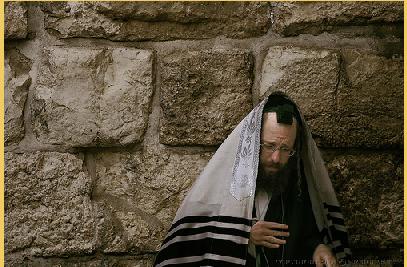 The West Wall in Jerusalem. After his conquest of Babylon, Cyrus allowed the Jewish captives to return to Israel and rebuild the Hebrew temple. It is believed that approximately 40,000 did permanently return to Israel. President Truman in his support for the Jews in the twentieth century, evoked the name of Cyrus.
The West Wall in Jerusalem. After his conquest of Babylon, Cyrus allowed the Jewish captives to return to Israel and rebuild the Hebrew temple. It is believed that approximately 40,000 did permanently return to Israel. President Truman in his support for the Jews in the twentieth century, evoked the name of Cyrus.
As the clock ticked down toward the expiration of the British Mandate in Palestine in May of 1948, and under pressure to finalize the Universal Declaration of Human Rights, Eleanor reached a tipping point when George C. Marshall’s State Department reversed its policy at the final moment and chose to appease the oil-producing states and oppose partition of Palestine. Eleanor then decided to resign from the US delegation to the UN. She famously stated in her letter to President Truman, “I cannot believe that war is the best solution. No one won the last war, and no one will win the next war.” Truman did not accept her resignation. But Eleanor realized, ahead of her time, that the United States’ refusal to back the Partition, which included international status for Jerusalem, would critically weaken the credibility of the UN and place the region itself in an untenable situation with regard to long-term stability.
The current Middle East fiasco should defer us once once again to Cyrus the Great for a history lesson. Cyrus’ vision of leadership was a forerunner to the UN 1947 resolution for the future of Palestine. Neil MacGregor, Director of the British Museum stated, “Cyrus set up a model of how you run a great multinational, multifaith, multicultural society . . . It left a dream of the Middle East as a unit, and a unit where people of different faiths could live together.”
The Tomb of Cyrus the Great at Pasargadae where Alexander paid his respects. The tomb is a UNESCO World Heritage site.
Today we must revive that dream or, as history has already chronicled, face disastrous results. Just as a strain of music creates a distinct melody through repetition, we now hear clearly — yet again — the strains of war in the Middle East. It is time for a new refrain, in vision and deed.
Building upon Cyrus’ model, creating a social order which allows the expression of individual cultures and faiths is the avenue to peaceful co-existence and governance. Our present-day Middle East drama calls for us to recognize that we already have the seed for fostering that co-existence. Creating an international peace zone within the Old City of Jerusalem is the key. Those in the United Nations who originally conceived this idea were expressing the wisdom of governance by recognizing that a leap was necessary to actualize peace in the region. They were well aware that the area was of monumental importance to three world religions and that stabilizing Jerusalem was essential to maintaining peace.
Jerusalem, sacred to the three great monotheistic religions, stands for something higher and more sublime than nationalism. It stands for the ideal which lies behind the very creation of the United Nations itself. Any attempt to oppose by force the internationalization of Jerusalem would be an affront to civilized men everywhere.” — From a letter sent by Reverend Charles T. Bridgeman, former Canon of St. George’s Cathedral in Jerusalem, to the President of the UN Trusteeship Council in January 1950
When History goes beyond Politics: Koresh or Cyrus street in Jerusalem. There is currently no street named Cyrus or Koroush in Tehran, the capital of Iran today. There is also an “Iran” street in Israel.
In his book, The Temple at Jerusalem: a Revelation, John Michell recognized the Old City of Jerusalem itself as the Temple. He saw it as the convergence point for all peoples of all cultures and faiths — Jewish, Muslim, Christian, as well as other spiritual traditions — to unite in peace, a United Nations for all religions.
That very concept, expounded by political and religious leaders throughout the world as well as by writers such as John Michell, has found expression through the arts. PURE VISION: The Magdalene Revelation is a novel based on a return to this noble ideal. With the Universal Declaration of Human Rights and the creation of an international peace zone within Jerusalem as foundational elements, Pure Vision sparks a transformative dialogue. The aim is simple. Once openly discussed, powerful ideas reshape reality.
As Neil MacGregor, Director of the British museum asks:
“What story of the Middle East, what story of the world, do you want to see reflecting what is said, what is expressed in this cylinder?”
That question resounds with a fundamental answer — human rights for all. The dramatic tale of the Middle East can change radically, as it has in the past. A region of trauma can once again be transformed into a land where religious freedom and individual dignity is honored. Then Jerusalem can finally become what it is meant to be: The City of Peace.

